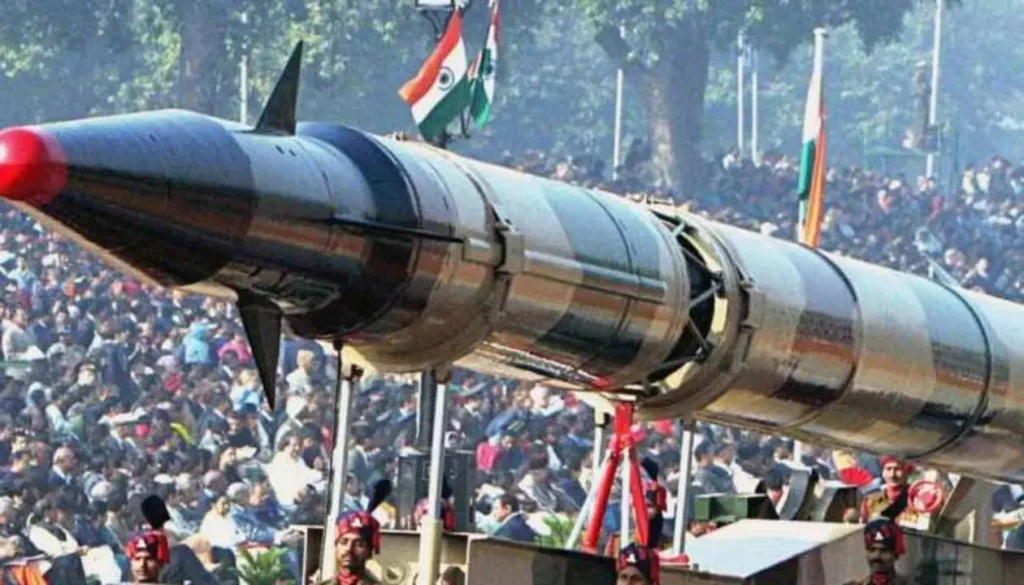As of January 2023, the total number of nuclear weapons in stockpiles across the globe amounted to approximately 12,512. According to the SIPRI’s yearbook, out of these, about 9,576 warheads were kept in military stocks for the purpose of possible use.

According to the most recent report published by the think tank SIPRI, nine nuclear-armed states, including the United States, Russia, the United Kingdom, France, China, India, Pakistan, North Korea, and Israel, are continuing to modernise their operational nuclear weapons. This is taking place in the midst of an ongoing conflict between Russia and Ukraine.
According to the Yearbook published by the Stockholm International Peace Research Institute (SIPRI), the size of China’s nuclear arsenal climbed to 410 warheads in January of this year, up from 350 warheads in January of 2022. It is anticipated that it will continue to expand. Depending on the composition of its armed forces, the assessment also stated that China may soon be in possession of an equal number of intercontinental ballistic missiles (ICBMs) as the United States or Russia by the end of this decade.
According to Hans M. Kristensen, Associate Senior Fellow at SIPRI’s Weapons of Mass Destruction Programme and Director of the Nuclear Information Project at the Federation of American Scientists (FAS), “China has begun a significant expansion of its nuclear arsenal.”
“It is becoming increasingly difficult to square this trend with China’s declared aim of having only the minimum nuclear forces needed to maintain its national security,” he said.
Additionally, India, Pakistan, and North Korea have increased their stocks of nuclear weapons. During the same time period, India’s nuclear arsenal expanded by four warheads, bringing the total number to 164, while Pakistan’s nuclear arsenal increased by five warheads, bringing the total number to 175.
According to the paper, “While Pakistan continues to be the primary focus of India’s nuclear deterrent, it appears that India is placing a growing emphasis on longer-range weapons, including those capable of reaching targets across China.”
In addition, the research indicated that approximately 9,576 warheads were held in military stocks for possible deployment as of January 2023, out of an estimated total global inventory of 12,512 warheads at that time. About 3,844 of these warheads were attached to missiles and aircraft, and about 2,000 of them, the majority of which belonged to Russia and the United States, were maintained in a condition of high operational alert.
In 2022, Russia and the United States possessed approximately 90 percent of the world’s nuclear weapons, and their respective nuclear arsenals were mostly unchanged from the previous year. However, following Russia’s invasion of Ukraine in February 2022, there has been less transparency on either country’s nuclear forces.
The paper also underlined the difficulties that were incurred by nuclear weapons control and disarmament diplomacy as a result of the invasion.
The Nuclear Trident of India
A nuclear triad is a three-tiered military force structure that may be fired from land, water, or air and comprises of nuclear bombs and missiles. It is also known as a nuclear tetrad. Components of the triad include strategic bombers, intercontinental ballistic missiles (ICBMs) deployed from land, submarine-launched ballistic missiles (SLBMs), and ICBMs launched from submarines.
The purpose is to dissuade the adversary from launching a first strike attack because a reactionary second strike would cause the adversary to sustain intolerable damage and cost them more resources than they can afford. It is important to highlight the fact that India has been making efforts to keep its credible minimum deterrence in place. The Defence Research and Development Organisation (DRDO) was able to complete the flight testing of its next-generation ballistic missile, which is known as Agni Prime, last week.
In December of 2016, India carried out a user training launch of the Submarine Launched Ballistic Missile (SLBM) INS Arihant. The launch was a success. The Indian Submarine INS Arihant is a homegrown subsurface ballistic nuclear (SSBN) submarine. Induction of the INS Arihant took place in August of 2016. In November of 2021, construction began on the INS Arighat, the second ship of its kind.
Both the Indian Army and the Indian Air Force had obtained the capability to carry out nuclear attacks significantly earlier than any other military in the world.